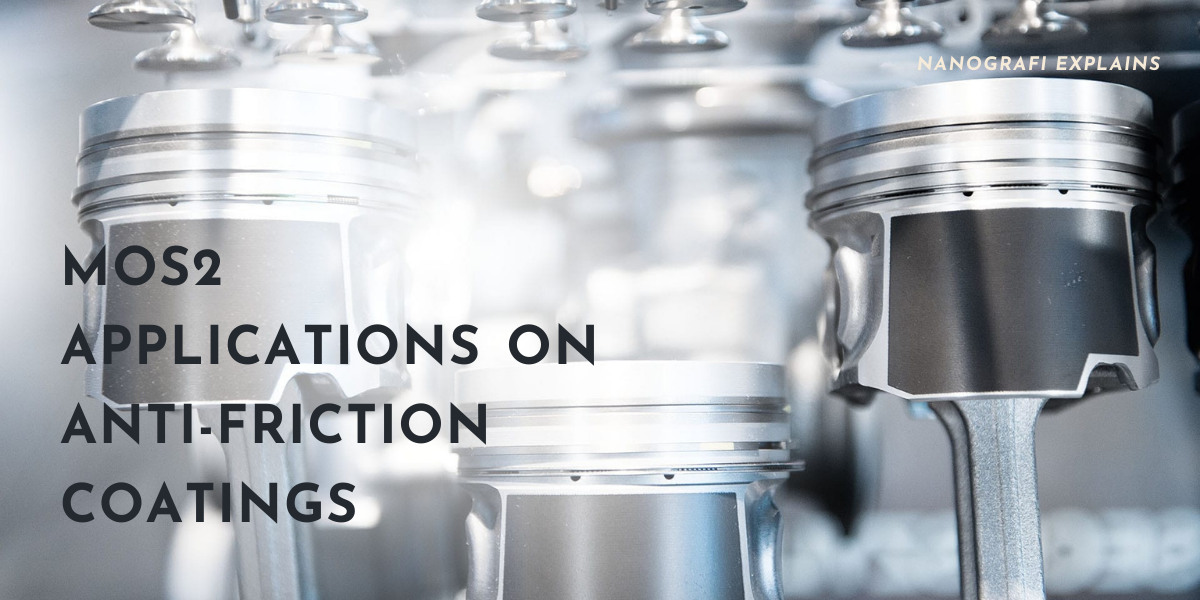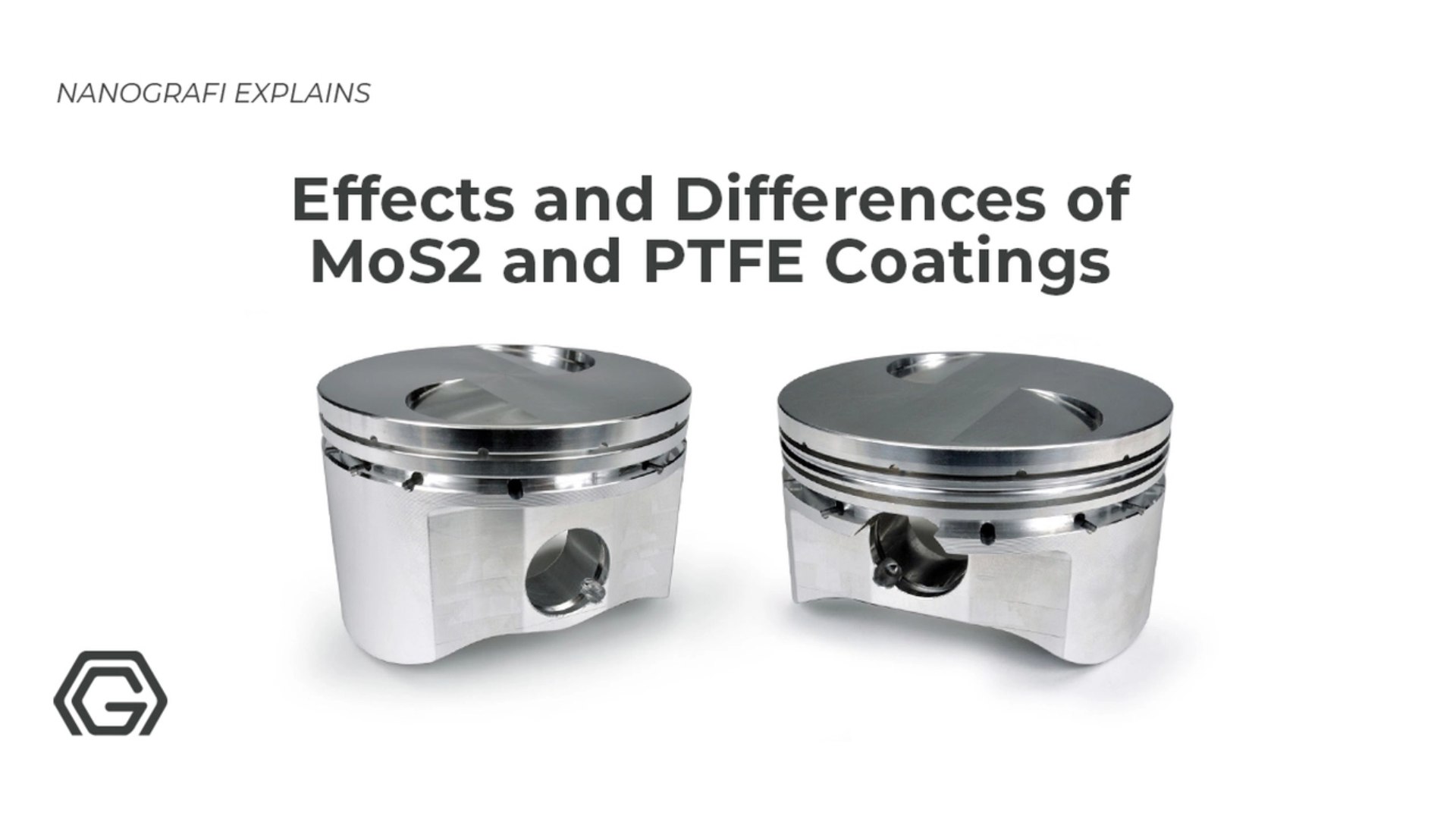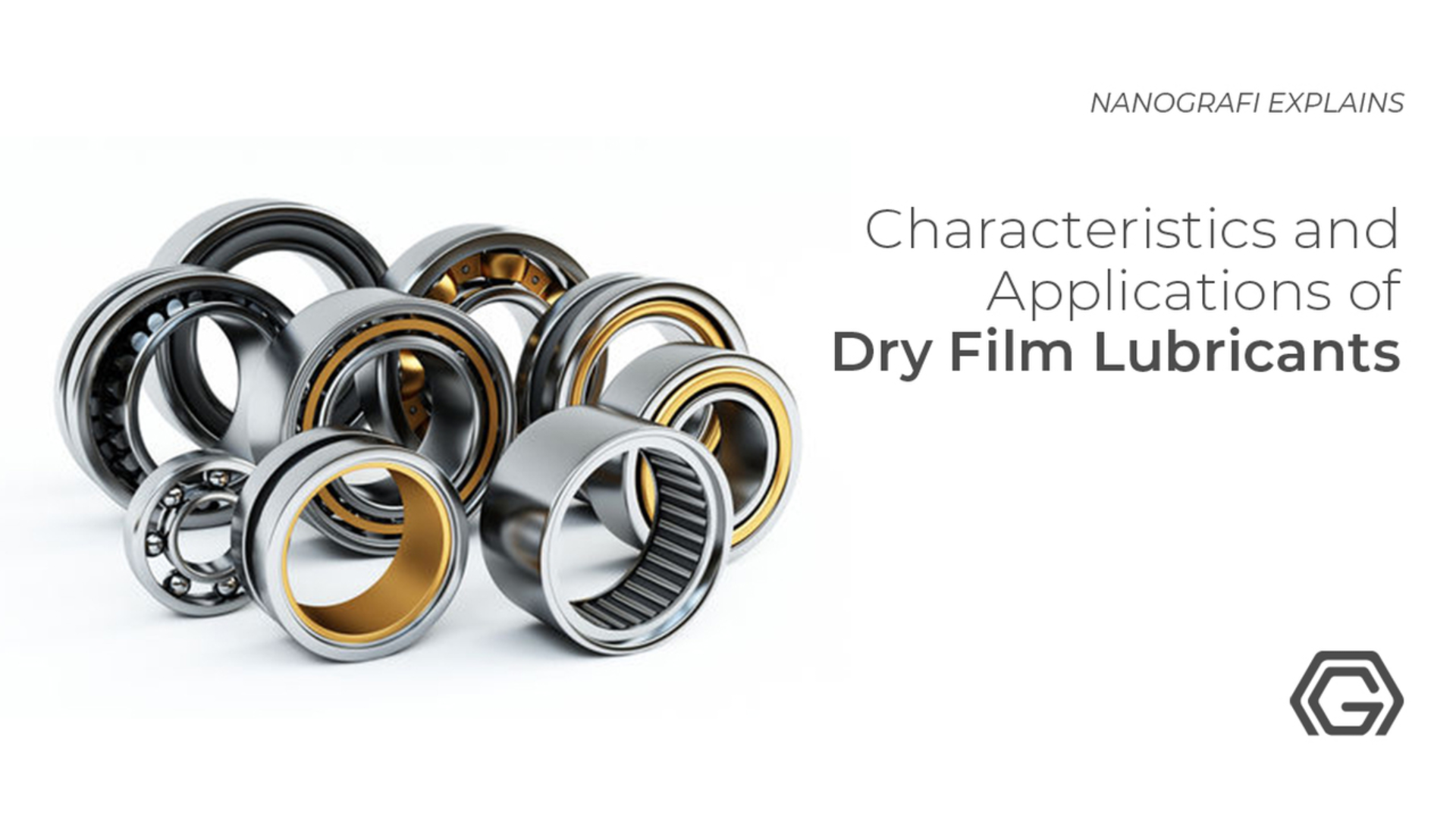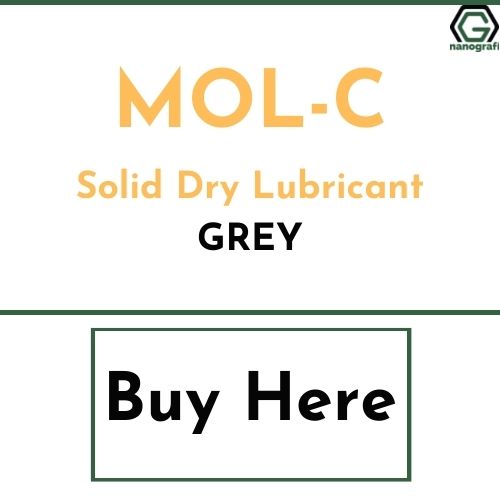MoS2 Applications on Anti-friction Coatings
MoS2 is basically the chemical formula of molybdenum disulfide which is a compound known to be a transition metal dichalcogenide having a blackish and silvery appearance.
MoS2 is one of the categories of dry lubricants as it exhibits low frictional properties. It has various categories in its properties as well and all of those are excellent contributors to the enhancement of the applications of MoS2. Due to the remarkable properties that it exhibits, it has several applications in the field of anti-friction coatings. All of these applications are true and rich in their nature as they play a part in promoting the efficacy of MoS2.
Introduction
Molybdenum disulfide is an inorganic compound. Sulfur and molybdenum makes up molybdenum disulfide (or moly). Molybdenum disulfide has MoS2 as its chemical formula. Molybdenum disulfide is classified as a transition metal dichalcogenide. Molybdenum’s principal ore is the mineral molybdenite. A transition metal dichalcogenide is solid with silvery black color and its occurrence is as the mineral molybdenite. Comparatively, MoS2 is unreactive. Oxygen and dilute acids cant affect it. Graphite and molybdenum disulfide are the same in both feel and appearance. Due to its robustness and low friction, molybdenum sulfide is utilized broadly as a dry lubricant. Bulk molybdenum disulfide has a 1.23 eV bandgap as it is a diamagnetic, indirect bandgap semiconductor like silicon.
Properties of MoS2
Crystalline Phases
Sulfide ions' planes force a plane of molybdenum atoms together. A layered structure is possessed by all MoS2 forms. A MoS2 monolayer is formed by these three strata. Weak van der Waals interactions hold the stacked monolayers together as they make up the bulk MoS2. 3R- MoS2 and 2H-MoS2 are the two phases in which crystalline MoS2 occurs in nature. In 3R-MoS2, R means rhombohedral symmetry and in 2H- MoS2, H means hexagonal symmetry.
Structural Properties
The molybdenum atom in both of these structures is at the trigonal prismaticcoordination sphere’s center. Each molybdenum atom also has a covalent bond with six sulfide ions. Whereas each sulfur atom has a bond with three molybdenum atoms, and pyramidal coordination is possessed by each sulfur atom. 3R- and 2H- phases are semiconducting. Intercalation of 2H-MoS2 with alkali metals helped in discovering a third, metallic, and metastable crystalline phase also called 1T-MoS2. It also has tetragonal symmetry. Doping can be done with electron donors (for instance, rhenium) to stabilize the 1T-phase, or microwave radiation can be used to convert it back to the 2H-phase.
Allotropes
There are some known MoS2-composed buckyball-like and nanotube-like molecules.
Exfoliated MoS2 Flakes
Monolayer MoS2 in the 2H-phase has a direct bandgap whereas Bulk MoS2 is an indirect bandgap semiconductor in the 2H-phase. In all of the MoS2 based 2-D devices, the research is promoted by MoS2's layer-dependent optoelectronic characteristics. Bulk crystals are exfoliated for forming single-layer to multiple-layer flakes through solution processing or a micromechanical dry process, resulting in the production of 2D MoS2. An adhesive material is used in micromechanical exfoliation (also known as Scotch-type exfoliation) for peeling apart the layered crystal repeatedly by overwhelming van der Waals forces. Then the crystal flakes transfer from the adhesive film to a substrate.
The Facile Approach
Geim and Novoselov utilized this facile approach for attaining graphene from the graphite crystals. Although, due to MoS2’s weaker adhesion to the substrate (Quartz, glass, or Si), it can’t be used for a uniform 1-dimensional layer. This above-mentioned scheme is only suitable for graphene. If cleaving MoS2 is necessary to prevent the flakes from getting contaminated with residual adhesive, the performance of PDMS stamps is good enough for that purpose whereas scotch tape is utilized as the adhesive tape. In solution, liquid-phase exfoliation is utilized for forming monolayer MoS2 to multi-layer MoS2. Lithium intercalation is one of the methods that are used for delaminating the layers and sonication in a high-surface tension solvent.
Mechanical Properties
Because of MoS2’s low coefficient friction and layered structure, MoS2 can shine as a lubricating material. On application of shear stress to the material, energy is dissipated on interlayer sliding. In order to characterize MoS2's shear strength and coefficient of friction in different atmospheres, there has been extensive work going on. When there is an increase in MoS2’s coefficient of friction, MoS2’s shear strength also increases. This property of MoS2 is known as superlubricity. On ambient conditions, MoS2 has a shear strength of 56.0 MPa along with the 0.150 coefficient of friction. According to the direct shear strength measurement methods, the shear strength is near 25.3 MPa.
Use of Chromium
When chromium is used to dope MoS2, MoS2’s wear resistance increases in lubricating applications. The nanopillars of Cr-doped MoS2 went under micro indentation experiments. According to those experiments, pure MoS2’s yield strength increased from 821 MPa (0 at. % Cr) to 1017 MPa (50 at. % Cr). The experiments also showed that there was also a change in the material’s failure mode other than the increase in MoS2’s yield strength. The huge amount of dopants filled the material and made brittle fracture modes apparent whereas the pure MoS2 nanopillar fails through a plastic bending mechanism. The broadly utilized method of micromechanical exfoliation in MoS2 has been studied carefully for understanding the delamination’s mechanism in few-layer to multi-layer flakes.
Layer-dependent Mechanism
Cleavage's exact mechanism was layer-dependent. Interlayer sliding delaminates 10 layer thick flakes whereas homogenous bending and rippling are enough for the flakes which are thinner than 5 layers. During micromechanical cleavage, a kinking mechanism was displayed by the flakes which had 20 layers or more. Because of Van der Waals's bonding nature, these flakes' cleavage was reversible. MoS2 has been recently used in flexible electronic applications, giving a chance for a further investigation into the MoS2’s elastic characteristics. Deposited on a holey substrate, micro mechanically exfoliated MoS2 flakes went under different nanoscopic bending tests through the usage of AFM cantilever tips.
The Total Yield Strength
The yield strength of 330 GPa was possessed by the stiffer and thicker flakes whereas the monolayer’s flakes were with 270 GPa yield strength. MoS2’s in-plane yield strength is 299 GPa according to the molecular dynamic simulations, matching the experimental results. Suspended monolayer flakes' modes of failure were also characterized by Bertolazzi and his coworkers. The strain at failure varies from 6-11%. 23 GPa is the monolayer MoS2’s average yield strength. The defect-free MoS2’s theoretical fracture strength is near this value of monolayer MoS2’s average yield strength. MoS2’s band structure shows sensitivity to strain.
Applications of MoS2
In dry gases or vacuum, tribosystems run because of a well-known solid lubricant, called Molybdenum disulfide (MoS2). MoS2 has a problem when it comes to applications under ambient conditions because of its sensitivity to humidity. Although, PVD (physical vapor deposition) process is utilized to optimize the deposition parameters for lessening the sensitivity to water molecules’ attack and for attaining a coating structure with promising frictional characteristics. Thus, even under moist conditions, an enhanced tribological behavior can be gained. Even at cryogenic temperatures, the candidates that can be applied are the MoS2 coatings.
Proven Stability
Their suitability has also been proven by them, for instance, to slide support elements between nuclear fusion experiments superconducting magnets. Although, the production of these coatings was only for this specific application. After considering the cost, the more common tribosystems may stop being utilized. Under different environments like cryogenic temperatures and hydrogen gas, tests were performed on Cr-containing and pure PVD-MoS2 coatings with an optimized structure.
To get more information about molybdenum disulfide (MoS2),
you can read our blog post here.
Lubricating Properties of MoS2
MoS2 is a solid lubricant that is applied broadly and well-suited for the vacuum and inert gaseous environment. Such solid lubricants display a friction coefficient of 0.03 in a vacuum and some conditions, they display even lower friction coefficients than 0.03. Although, MoS2 applications face one significant flaw which is the sensitivity of MoS2 to water vapor's presence. The friction coefficients were observed to be between 0.15 and 0.30 in humid air, accompanied by high wear. 88 K was the minimum temperature reported by some authors for special liquid lubricants. Although, the applicability of commercially available greases and oils is only at more than 173 K temperatures.
Hydrodynamic Lubrication
In addition, hydrodynamic lubrication can’t be built by cryogenic liquids themselves. Thus non-contacting, dry rolling, or dry sliding systems should be employed for components like valves, moving seals, liners, and bearings. Smooth sliding surfaces were required in some special applications at cryogenic temperatures in a vacuum environment. One of the examples is large superconducting magnets’ support structure for nuclear fusion devices. Liquid helium cools these magnets down as it has a 4.2 K boiling temperature. Large forces are experienced by the superconducting cells during the magnetic field's cooling down and ramping up because of the increasing electrical current in the magnetic field and materials' thermal shrinkage, leading to an extremely slow tangential movement of various mm on individual coils’ support.
MoS2 as a Use of Lubricant
A lubricant should be used at these supports which will assure low friction sliding without stick-slip because a normal conducting zone can be initiated by mechanical shocks and frictional heat. According to tests, such demands can be met only by MoS2 coatings with no additions. MoS2 crystallizes like graphite in a lamellar structure. Hexagonal planes are formed by the Mo atoms at both sides with the covalently bonded S atoms. There is a 0.308 nm spacing between the S atoms and the closest MoS2 plane, whereas there is a spacing of 0.154 nm between the S atoms and Mo. The good lubricating characteristics of the planes are due to the weak Van-der-Waals forces between the planes, which leads to the easy shearing tangential to the planes. A tribofilm is made with lattice planes’ basal orientation during sliding according to the molecular dynamics simulations.
Model Calculations
According to the model calculations, a minimum of 0.006 friction coefficient is possible with perfectly aligned layers because of the repulsive Coulomb forces between the sulfur atoms. Binders, chemical or physical vapor deposition (CVD, PVD), or burnishing is used to apply MoS2 as anti-friction (AF) coatings. In polymer composites, it acts as a friction lessening component. In most cases, anti-friction coatings consist of an organic binder but usually, it consists of one or more than one solid lubricant. Some variants, for instance, those which contains PTFE (polytetrafluoroethylene) and MoS2 are appropriate to operate at low temperature. In order to attain the required characteristics, a particular running in is needed by many AF coatings. There was an extreme case once in which there was a sprayed MoS2 coating with the polycarbamide binder. This binder was particularly made for space applications. The virgin coating’s scanning electron microscopy (SEM) image shows that the coating is only made up of loosely adhered particles.
Smooth Film Results
A very smooth film results because the particles are compacted during sliding and loading. This virgin coating’s friction coefficients are shown against 100Cr6 steel balls for various cryogenic environments and in all investigated media, it offers efficient lubrication apparently. At room temperature, friction is considerably higher whereas it is considerably lower in a cryogenic environment. At 77 K, 0.02 is the lowest friction coefficient in a vacuum. Lower friction is given by higher velocities and higher loads mostly as one of the main properties of MoS2 coatings is that they have low friction. Coatings with a more textured structure can be obtained by optimizing the deposition parameters through the usage of a PVD process.
New Established Coatings
Koch et al. used a similar concept for the coatings established for the support elements in the WENDELSTEIN W7-X fusion experiment’s superconducting magnet system. Such coatings are capable of withstanding extreme operating conditions, for instance, a combination of high vacuum with temperatures as low as 5 K. Friction coefficients of 0.06 and 0.015 are reported by other authors in liquid nitrogen (LN2) along with the minimum wear on both of the sliding surfaces for the coating of PVD-MoS2 which contains Ti.
Vacuum Environment
All of the variants displayed wear coefficients of 1-3×10−7 mm3N−1m−1 and friction coefficients of less than 0.1 under vacuum conditions. A friction plot is showed for a PVD-MoS2 coating in a high vacuum as an example. In the Wendelstein 7-X fusion experiment, the same kind of coating is utilized. The restarts and test stops cause the peaks towards the negative direction. The wear life is more than 350,000 cycles and 0.06 is its friction coefficient.
Air Environment with 50% Humidity
An increase up to 10−5 mm3N−1m−1 was made in the wear coefficient and the COF values increased to 0.1 and 0.25 in normal air with 1.4 × 103 Pa water vapor partial pressure, which is more than one order of magnitude higher as compared to the changes in the COF and wear coefficient under the vacuum conditions. The friction development’s typical example can be seen too. Although, the best variants displayed values in 10−6 mm3N−1m−1 order, which can be compared to the wear of dings, diamond-like carbon coatings, made to operate under high humidity. The X-ray diffraction (XRD) detected that a high degree of basal plane orientation is possessed by the coatings which were suitable for ambient air conditions. XRD was also done on the coating which performed best in humidity. MoS2 coatings without further dopants are capable of withstanding adverse conditions like high humidity and can be made by using an appropriately adapted PVD process.
If you are interested in application of MoS2 as a dry film lubricant,
you can read our blog post here.
Coefficient of Friction
Here, we are overviewing the coating’s average coefficients of friction. The calculations were done on the friction coefficient (µk) for steady states. At 150 rpm constant speed, all the frictional force measurements were noted. A good coefficient of friction is provided by the MoS2 coatings. Same similar average friction values and same behaviors were exhibited by the MoS2 over TiN films and MoS2 films. The results that are told here are a characteristic of the coating of identical MoS2 top layer on both of the substrates. As compared to MoS2 coatings’ coefficient of friction, TiN’s average coefficient of friction is higher. Its value is 0.62.
Close-field Magnetron Sputtering
Close-field magnetron sputtering was used to deposit a thin film and the results were similar with 0.65 of average coefficient of friction. 0.12 is the average frictional value of the sputter-deposited MoS2 films and it can be compared to the low average coefficient of friction of the MoS2 films as its value 0.14 which is near 0.12. The coefficient of friction has a comprehensive effect which can be seen here. The coated substrates’ friction coefficient is plotted against the number of cycles. As compared to the TiN coating’s coefficient of friction, a significantly lower coefficient of friction is possessed by the MoS2 over TiN coating. MoS2’s coefficient of friction stayed consistent and kept displaying a low value during the 20,000 cycles' period. On applying a normal load of 0.375 N, the measurements were made on the counter face steel pin. Base AI was provided with good protection by TiN but the frictional characteristics that it exhibited, were not good enough. The range of TiN’s frictional coefficient is from 0.59 to 0.77.
Normal Load
Moreover, for normal load and identical speed, MoS2 over TiN has its coefficient of friction in a lower range from 0.12-0.15. Similar results were displayed with a 0.1 coefficient of friction when the MoS2 coatings were studied in several other studies. The sputtering technique was used to deposit MoS2 film. In ambient conditions, 0.08 of steady-state coefficient of friction was displayed by the MoS2 film with a thickness of the one-micron film.
Surface Interactions
With different loads, there comes a change in the actual load that’s acting on the surface of the substrate through the pin, changing the contact area and coefficient of friction. Hertzian contact theory can be used to explain this phenomenon. Other than that, it can also be done by calculating Hertzian contact pressure for the setup’s geometry and applied normal loads. According to the results of the tests, there is a linear relationship between the maximum Hertzian contact pressure and applied normal load. With the corresponding magnitude, there comes an increase in the maximum Hertzian contact pressure when there is an increase in the applied normal load. Wear behavior and frictional coefficients for MoS2 were directly influenced by the change in contact pressure. For 1.1, 0.375, and 0.25, the maximum Hertzian contact pressures were 430, 300, and 263 MPa. If we divide the contact area with the total normal force that’s acting on the tribometer’s counter face steel pin, we can calculate the normal force that acts upon the thin films’ surface.
Use of Optical Microscope
An optical microscope was used to measure the contact area and diameter of the steel pin which is circular with 0.042 mm. The contact pressure on the surface and the empirically calculated contact area are exhibited. 0.00138 mm2 is the steel pin’s contact area. 800, 270, and 180 MPa were the respective contact pressures for 1.1, 0.375, and 0.25 N.
Mechanism of Wear and Tear
In the MoS2 film's case, the substrate material (AI) was exposed because the wear was apparent and the track was rough. The track’s width on MoS2 coated surface was regular because of the wear and tear, leading to the production of a rugged wear track having a high coefficient of friction. However, In the case of MoS2 over TiN film, the substrate was prevented from excessive wear and damage by TiN below the MoS2 layer. The substrate material was not scarred and a uniform width was possessed by the wear track. Due to MoS2’s lamellar structure, along which the layers can slide, MoS2 is utilized as a solid lubricant. In a wet environment, the performance of MoS2 is not good enough, causing the corrosion of metal surfaces because of the galvanic corrosion between metals and Molybdenum disulfide.
To get more information about Mol-C products, you can visit our official website.
Conclusion
MoS2 is a highly usable chemical compound as it has some of the best properties which exclusively distinguish it from the rest of the chemical compounds. MoS2 has played a remarkable role in upbringing the anti-friction properties and as a result, has given rise to the applications which have paved the way for success for MoS2 in various fields throughout the world.
To get more information, you can visit Blografi.
References
https://cutt.ly/iJz5XoM
https://www.mdpi.com/2075-4442/4/3/32
https://iopscience.iop.org/article/10.1088/0957-44...
https://onlinelibrary.wiley.com/doi/abs/10.1002/ls...
Recent Posts
-
Nanocomposites in Food Packaging
The utilization of nanocomposites in food packaging represents a significant advancement in the fiel …19th Apr 2024 -
What is the Difference Between 7075 and 6061 Aluminum Alloy?
When comparing 7075 aluminum alloy to 6061 aluminum alloy, it's essential to understand their disti …5th Apr 2024 -
Iron-Air Batteries: The Ultimate Guide
Iron-air batteries represent a significant breakthrough in energy storage technology, offering a sus …29th Mar 2024








